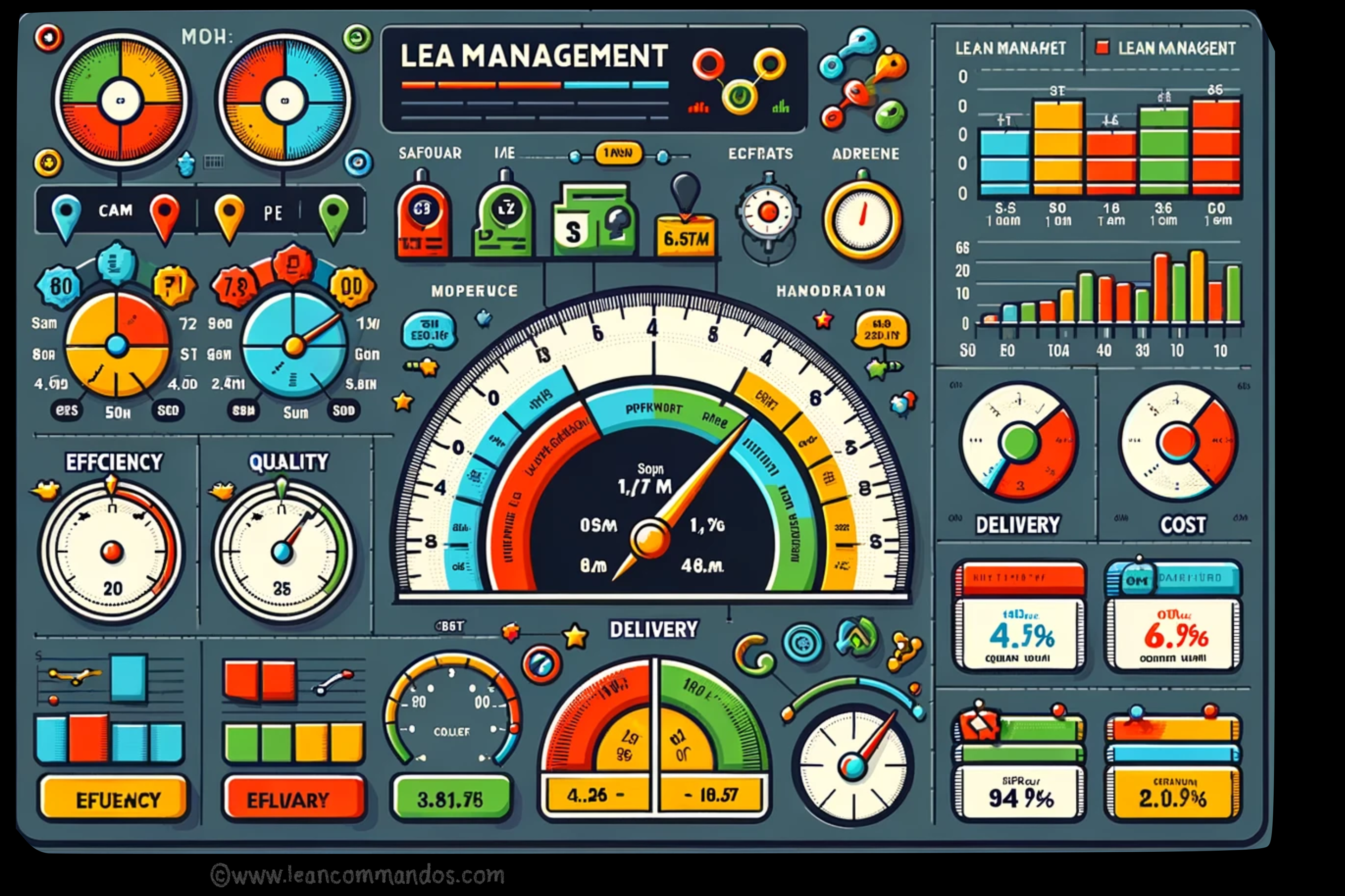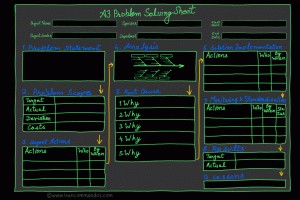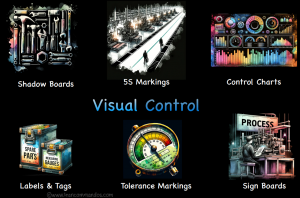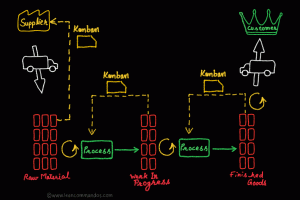Introduction
Key Performance Indicators (KPIs) are the beacon lights for any organization that steers the workforce towards achieving strategic goals. These quantifiable measures assess the success of an organization in terms of progress against its objectives. Whether it’s boosting sales, improving customer satisfaction, or enhancing operational efficiency, KPIs are integral in the lean management toolkit for continuous improvement.
History and Development
KPIs emerged from the business world’s need to gauge performance over time. With roots traceable to the early 20th century with the advent of the Balanced Scorecard, KPIs have evolved with business intelligence advancements, becoming essential in data-driven decision-making processes.
Key Principles
The efficacy of KPIs lies in their ability to provide a focused and actionable snapshot of performance. They are defined by their relevance to business objectives, the ability to measure progress, comparability over time, and the action they inspire. Ideally, they are SMART: Specific, Measurable, Achievable, Relevant, and Time-bound.
When to Use the Tool
KPIs are applicable across diverse organizational contexts, from monitoring sales targets and production efficiency to tracking customer retention and employee performance. They should be used when specific, quantifiable outcomes can be identified as critical to the success of the business or a particular initiative.

How It Works
Implementing Key Performance Indicators (KPIs) is a strategic process that involves several critical steps to ensure their effectiveness in driving organizational success. KPIs serve as vital navigational instruments, guiding businesses towards their strategic goals by offering quantifiable insights into performance. In this comprehensive guide, we delve into the intricate workings of KPIs, exploring their implementation, monitoring, and adaptive nature.
1. Strategic Alignment:
The foundation of KPI implementation lies in aligning them closely with the organization’s strategic objectives. Before selecting KPIs, it’s imperative to have a clear understanding of the overarching goals. These objectives serve as beacons, guiding the selection of KPIs that directly contribute to the organization’s mission and vision.
2. Indicator Selection:
Once strategic objectives are defined, the next step involves identifying both leading and lagging indicators. Leading indicators offer predictive insights, allowing organizations to anticipate outcomes and take proactive measures. Lagging indicators, on the other hand, provide retrospective analysis, measuring the results achieved. By incorporating a balanced mix of leading and lagging indicators, organizations gain a comprehensive view of their performance landscape.
3. Baseline Establishment:
Establishing a clear baseline or benchmark for each KPI is paramount for comparative analysis over time. This baseline serves as a reference point, enabling organizations to gauge progress and identify areas requiring improvement. Through meticulous baseline setting, organizations can track performance trends and assess the efficacy of their initiatives with precision.
4. Data Infrastructure:
Effective KPI implementation hinges on robust data infrastructure. Organizations must determine the data sources, collection methods, and analytical tools necessary to monitor KPIs accurately. Leveraging advanced analytics technologies and data-driven insights empowers organizations to derive actionable intelligence from KPIs, driving informed decision-making and strategic course corrections.
5. Continuous Review and Adaptation:
KPIs are dynamic entities that evolve in tandem with organizational objectives and external market dynamics. Regular review and adaptation of KPIs are essential to ensure their relevance and efficacy. As business priorities shift and new challenges emerge, organizations must recalibrate their KPIs to reflect changing realities and aspirations.
6. Communication and Action:
Effective communication of KPIs within the organization is imperative to foster alignment and accountability. All stakeholders should have a clear understanding of the chosen KPIs, their significance, and how individual actions contribute to collective success. Moreover, KPIs must catalyze action, driving meaningful changes in strategies, tactics, and processes. By translating KPI insights into actionable initiatives, organizations can realize tangible improvements in performance and outcomes.
In summary, the implementation of KPIs is a multifaceted process that demands strategic alignment, meticulous planning, and continuous adaptation. By adhering to the principles outlined in this guide, organizations can harness the full potential of KPIs as catalysts for performance improvement and organizational excellence. With a clear understanding of how KPIs work and their transformative impact, businesses can navigate complex challenges, drive innovation, and achieve sustainable success in today’s dynamic business landscape.
Benefits
KPIs provide a clear focus for strategic and operational improvement, quantifiable metrics to gauge progress, and help align activities with the organization’s vision and goals. They facilitate informed decision-making and empower teams by providing clarity on performance expectations.
Common Mistakes and Pitfalls
Common pitfalls in KPI implementation include choosing too many KPIs, which can dilute focus, failing to align them with strategic objectives, not setting clear targets, and lack of communication within the organization. Additionally, neglecting to update KPIs as business needs evolve can render them ineffective.
Tips for Success
Select a manageable number of KPIs and ensure they are well-understood across the organization. Review them regularly and be prepared to adapt as circumstances change. Most importantly, use the data to drive meaningful action.

Integration With Other Lean Tools
KPIs complement other Lean tools such as Value Stream Mapping and Continuous Improvement (Kaizen). They provide the metrics to track progress made by these methodologies and highlight areas for further Lean interventions.
FAQs
What differentiates a KPI from a regular metric?
KPIs are key metrics specifically chosen because they are crucial indicators of progress towards an important strategic goal.
How many KPIs should an organization have?
While it varies, a good rule is to have no more than 5-7 KPIs to maintain focus.
Can KPIs change over time?
Yes, KPIs should be reviewed regularly to ensure they remain aligned with business goals.
Who should be involved in setting KPIs?
Setting KPIs should be a collaborative process involving leadership and those responsible for the outcomes.
How often should KPI data be reviewed?
This can vary, but typically KPIs should be reviewed monthly or quarterly
References and Further Reading
- “Lean Thinking: Banish Waste and Create Wealth in Your Corporation” by James P. Womack and Daniel T. Jones.
- “The Lean Six Sigma Pocket Toolbook: A Quick Reference Guide to Nearly 100 Tools for Improving Quality and Speed” by Michael L. George, John Maxey, David Rowlands, and Mark Price.
- “Key Performance Indicators (KPI): Developing, Implementing, and Using Winning KPIs” by David Parmenter
Conclusion
In the pursuit of operational excellence, Key Performance Indicators serve as indispensable tools within the Lean management toolbox. By providing a framework for measurement-driven improvement, KPIs empower organizations to identify inefficiencies, drive informed decision-making, and continuously elevate performance levels. Through strategic implementation and thoughtful integration with other Lean methodologies, KPIs pave the way for sustainable success in today’s competitive business landscape.







3 Responses
you have a great blog here! would you like to make some invite posts on my blog?
Thanks for another magnificent article. Where else could anybody gett that kindof info iin such an ideal way of writing? I’ve a presentation next week,and I am on the look for such information.
Hmm it appears like your website ate my first comment (it was super long) so I guess I’ll just sum it up what I submitted and say, I’m thoroughly enjoying your blog. I as well am an aspiring blog writer but I’m still new to everything. Do you have any tips and hints for inexperienced blog writers? I’d genuinely appreciate it.